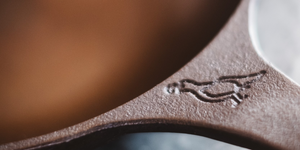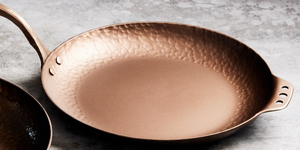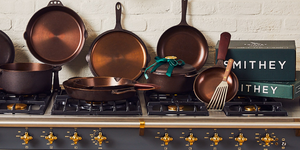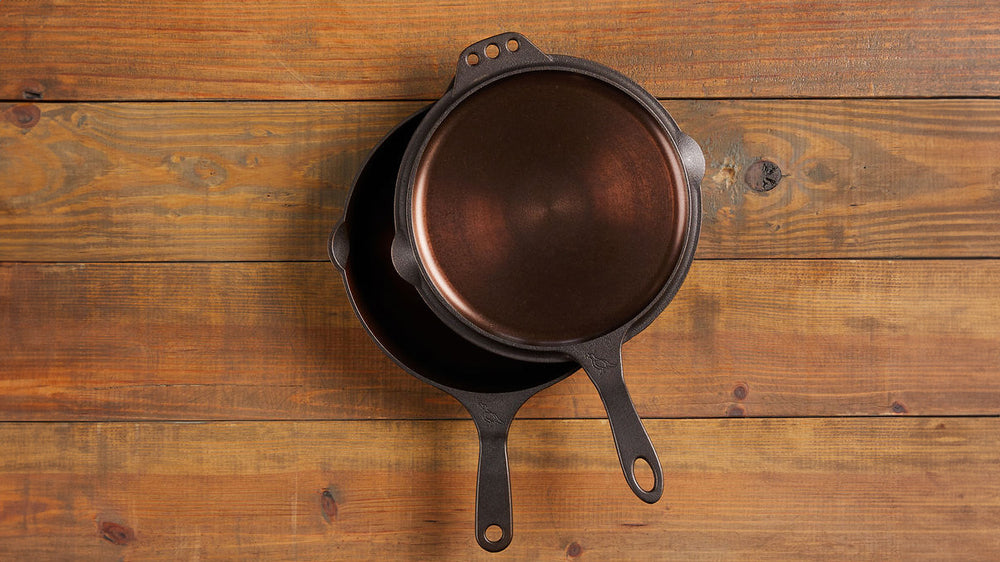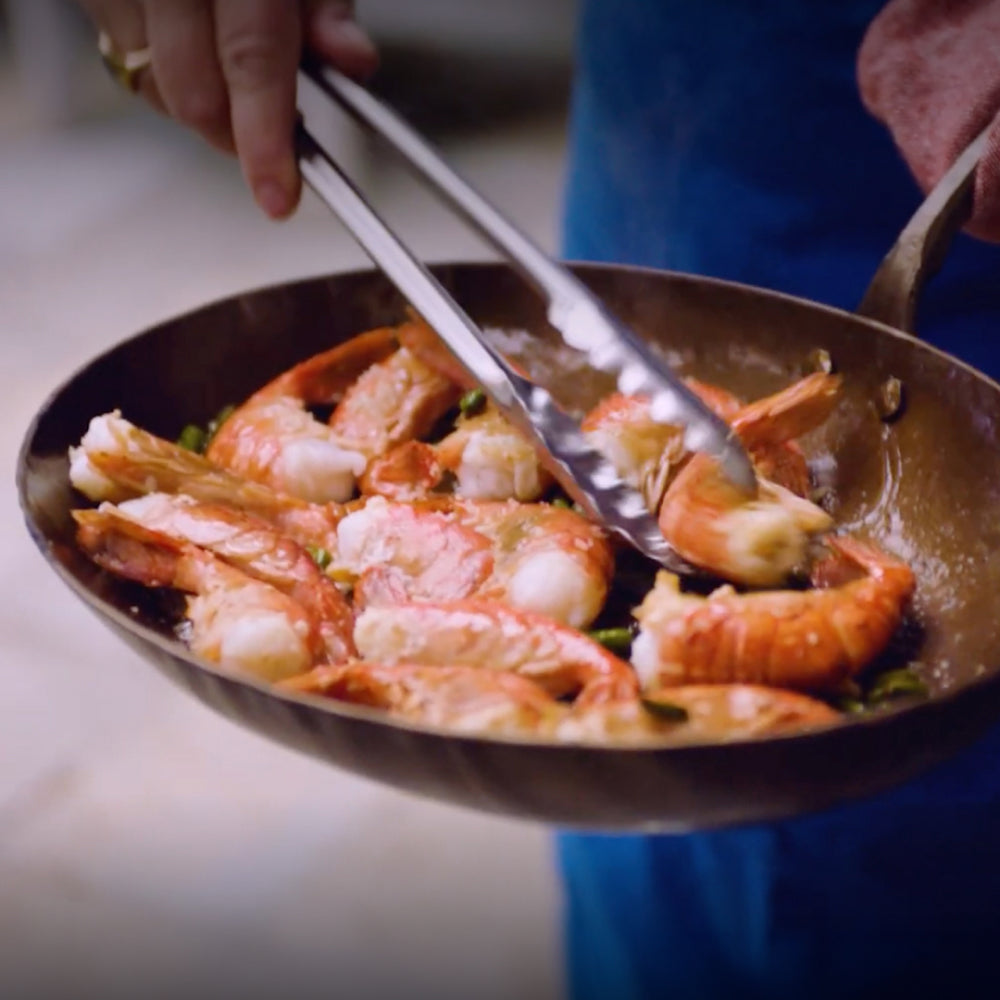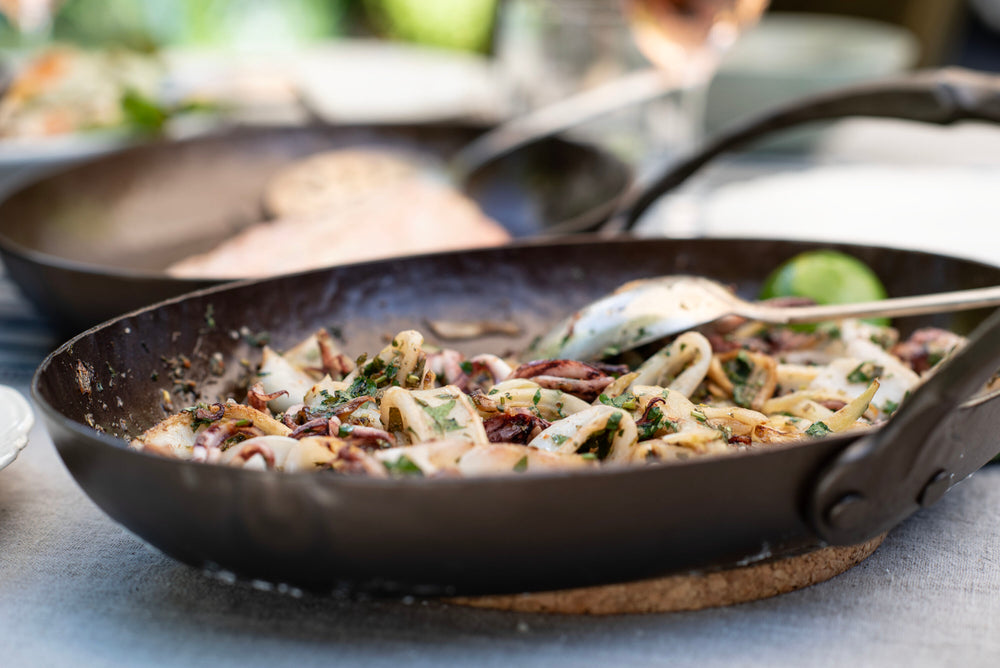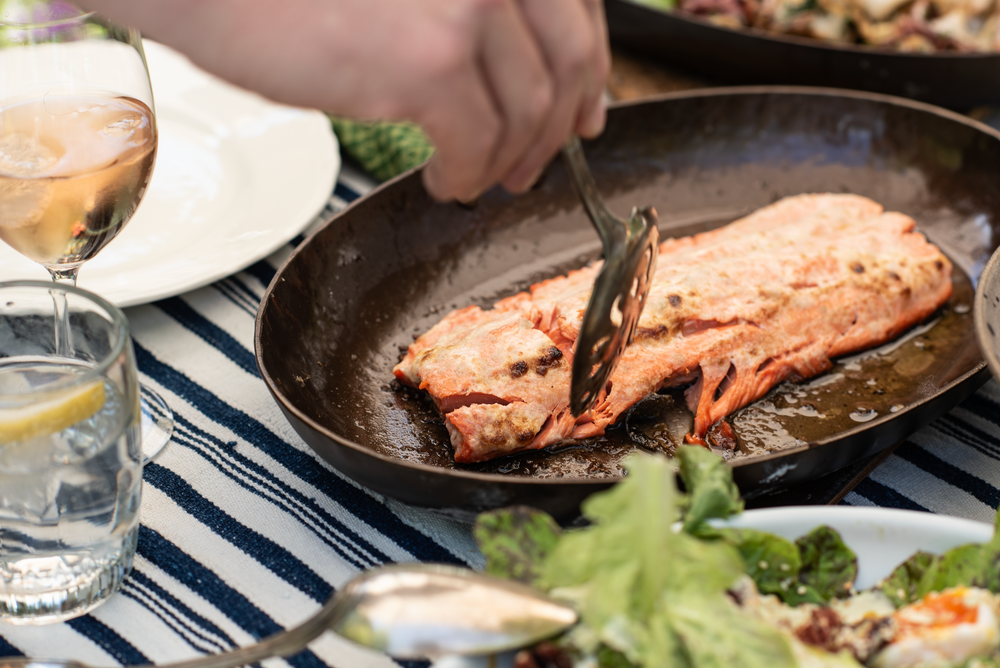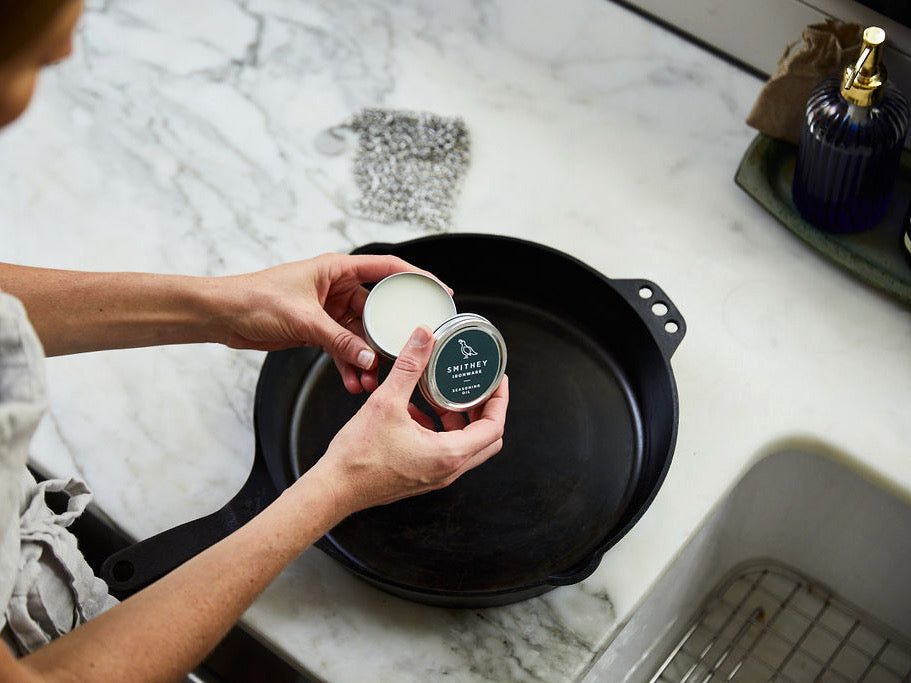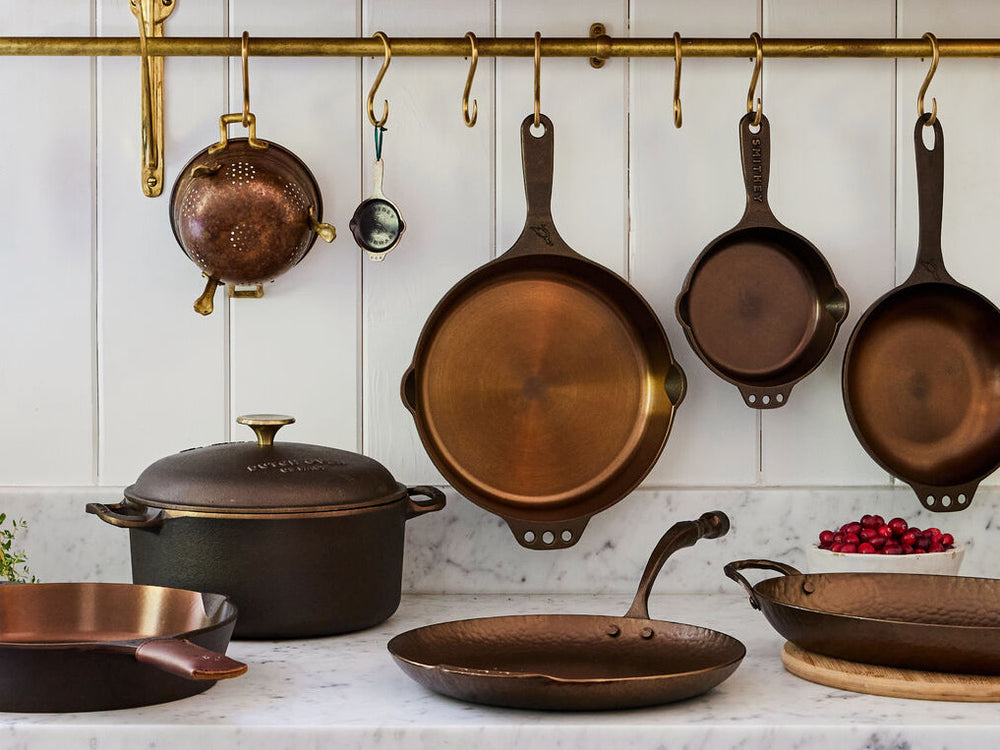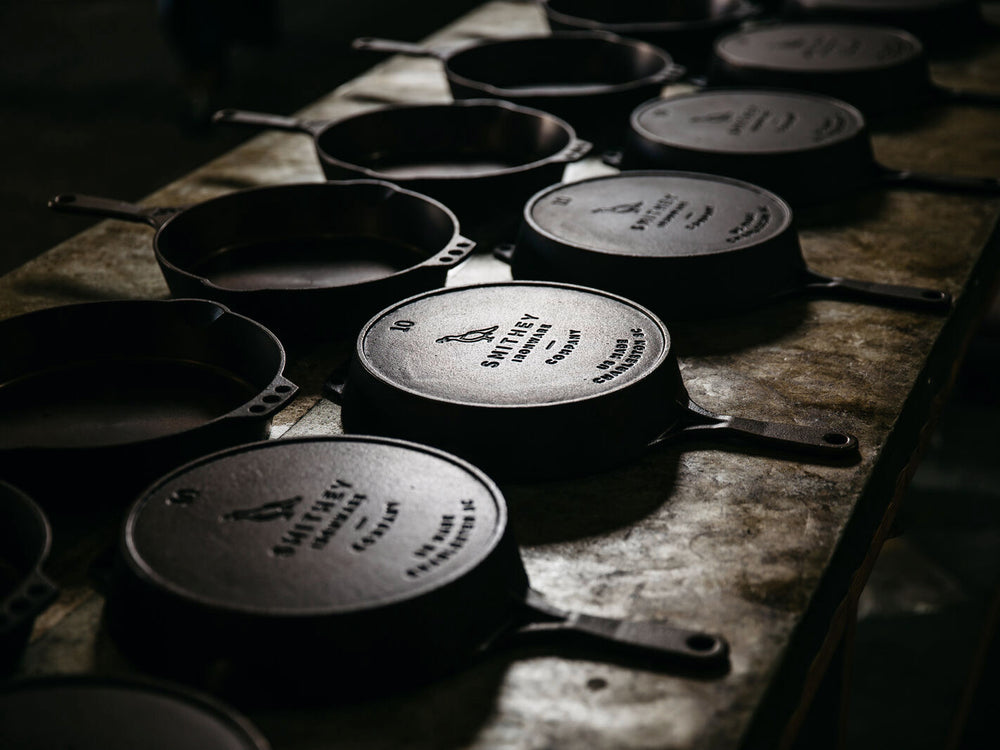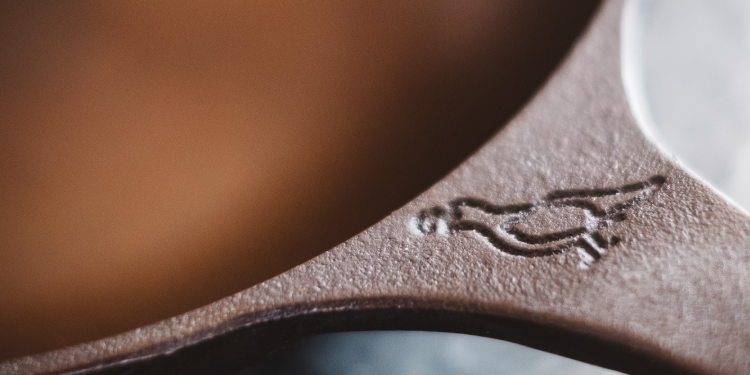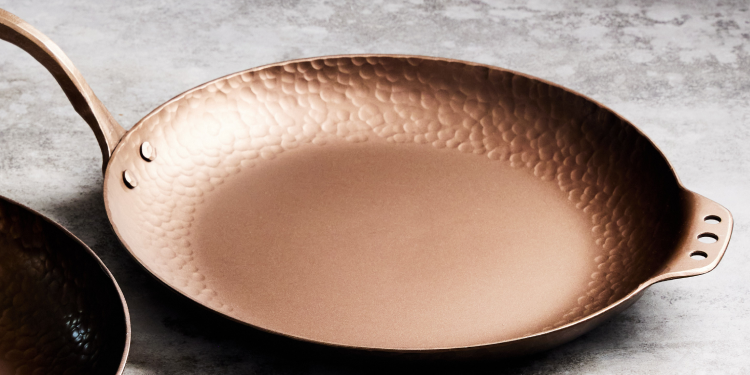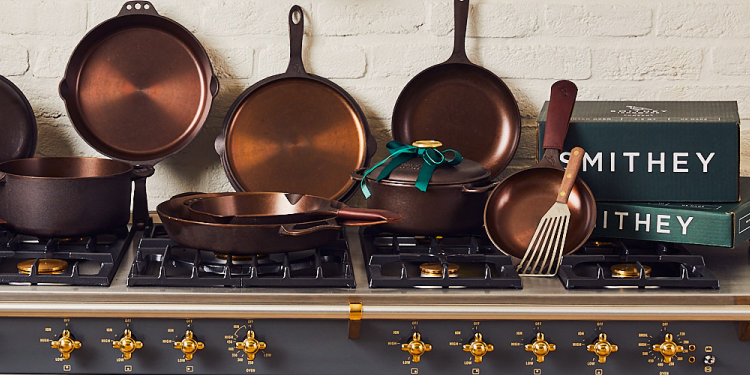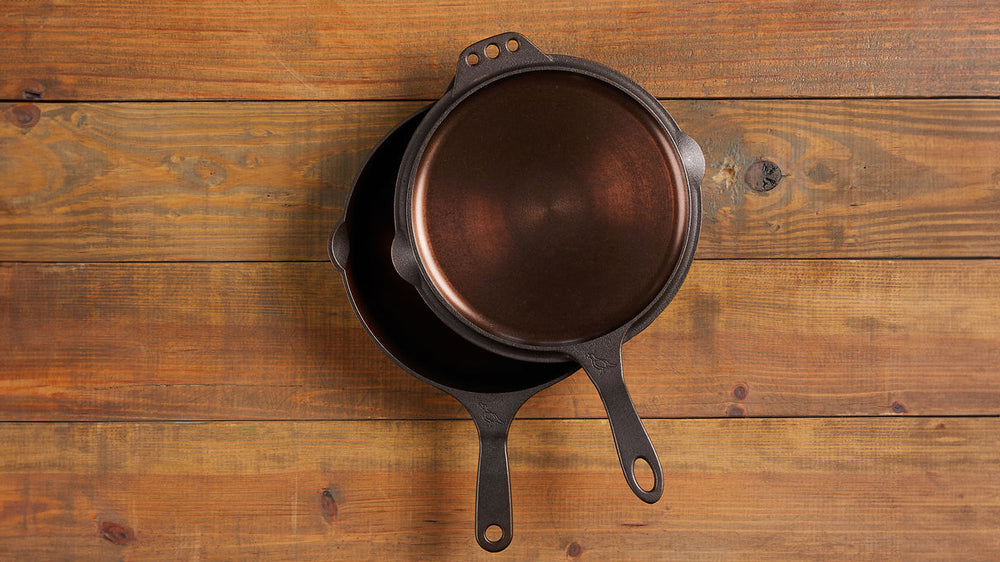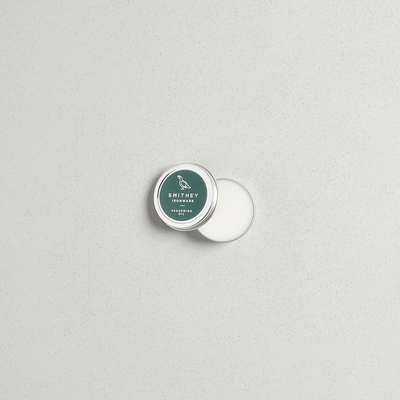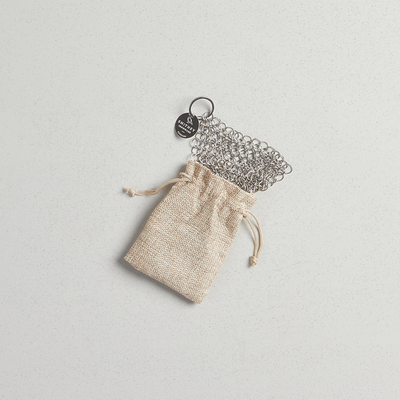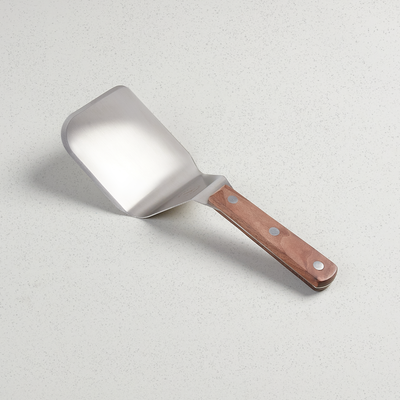Cast of Characters | Walter
Smithey’s resident seasoning artist opens up about cast iron cooking, common misconceptions, and his personal seasoning technique known as "the right touch".
Did you grow up with cast iron on the stove?
Oh, yeah. When I was a little kid, we used to bake cakes and cook pancakes in cast iron pans.
What are some of the dishes on regular rotation in your house?
Well, I don’t make much. My wife is really the cook in the family. Eggs, pancakes, fried chicken, okra, pirleau, you name it—there’s nothing she doesn’t cook in a Smithey.
Is she a seasoning expert, too?
Oh, no. She’ll come in, cook in a skillet, mess it up a little bit, and then I come in afterward and season it up again.
What’s your secret to seasoning? Any little-known tips or tricks?
It’s all about the touch. You gotta get that right touch. Once you cook in the pan, rinse it under hot water, dry it well, and then add a thin coat of oil and heat it up on the stovetop or in the oven until the oil dries and the pan turns a deep black. You don’t need to use too much oil, just enough for a little shimmer. I season my skillet after every use, and I tell people to do the same. Just get into the habit.

What’s the biggest mistake you see people making?
You know, cast iron’s pretty hard to mess up for the most part. The trick is not letting the food sit in it too long or get gummed up. And never leave it wet for too long—rust on cast iron is so sad.
Describe your typical workday. When do the skillets come to you for their first coat of oil?
I get each batch when it comes from the polishing area. Then, I heat the pans up in the oven and blue them for about an hour and a half until they turn a deep, deep purple—that’s the secret to getting that perfect color you see on our pans. After that, I pull them out and apply the oil. And this part, that first fresh seasoning, is where having the touch—the right touch—becomes really important. If I rub the pan too hard, it’ll get scratched and nicked up. If I don’t rub it hard enough, it won’t get a proper coat. If I miss a spot, it’ll get splotchy the first time you cook with it. Those things don’t matter so much once you get your Smithey home as long as they’re done properly here with us the first time.
So how exactly did you perfect the right touch?
Well, it’s a little bit intuition and a bit little trial and error. I’ll tell you a secret: When I first started, I messed up a pan—maybe two—and I got so mad at myself. I said, ‘Walter, those skillets are damn ugly. Do better.’ I like to make things look good and I don’t like making mistakes, you see. I tweaked a few things, fixed my technique, and it wasn’t long before I found the touch.
 Skip to content
Skip to content
